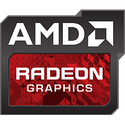
Everything You Need To Know About GeForce GTX 560 Ti 448 Cores
On the 29th of this month, NVIDIA will launch its newest graphics card SKU, the GeForce GTX 560 Ti 448 Cores. We got our first sniff of it last month. Today we present to you all the specifications that matter: clock speeds, voltages, device IDs, etc., but first a brief history. NVIDIA launched the original GeForce GTX 560 Ti back in January, based on its spanking new GF114 silicon. It packed 384 CUDA cores, a 256-bit wide GDDR5 memory interface, 1 GB of memory, high clock speeds, and fairly decent overclocking potential. AMD's Radeon HD 6870 was "pwned" (NVIDIA's words). But then, AMD managed to work closely with its partners to create a 1 GB version of its Radeon HD 6950 graphics card. Coupled with diligent component cost balancing, AMD was able to neuter GTX 560 Ti to a good extant. With the upcoming winter shopping season, NVIDIA does not want to take any chances with its competitiveness in the $250-ish "sweetspot" segment, and hence it had to redesign the GTX 560 Ti.
The new GeForce GTX 560 Ti will come with "448 Cores" brand extension, and as it suggests, the GPU now has 448 CUDA cores as opposed to 384 cores on the original. The new SKU will use the same silicon on which the GTX 570, GTX 580, and dual-GPU GTX 590 are based: GF110. The chip will carry the marking "GF110-270-A1". Apart from the 448 CUDA cores, the new SKU will have a memory bus width of 320-bit, and standard memory amount of 1280 MB, just like the GTX 570. The GTX 560 Ti Core 448 has clock speeds of 732 MHz core, 1464 MHz CUDA cores or shaders, and 950 MHz actual (1900 MHz DDR, or 3.80 GHz GDDR5 effective) memory clock speed. So the only thing that sets the new GTX 560 Ti 448 Cores from GTX 570 is the CUDA core count (448 vs. 480 on the GTX 570).
The new GeForce GTX 560 Ti will come with "448 Cores" brand extension, and as it suggests, the GPU now has 448 CUDA cores as opposed to 384 cores on the original. The new SKU will use the same silicon on which the GTX 570, GTX 580, and dual-GPU GTX 590 are based: GF110. The chip will carry the marking "GF110-270-A1". Apart from the 448 CUDA cores, the new SKU will have a memory bus width of 320-bit, and standard memory amount of 1280 MB, just like the GTX 570. The GTX 560 Ti Core 448 has clock speeds of 732 MHz core, 1464 MHz CUDA cores or shaders, and 950 MHz actual (1900 MHz DDR, or 3.80 GHz GDDR5 effective) memory clock speed. So the only thing that sets the new GTX 560 Ti 448 Cores from GTX 570 is the CUDA core count (448 vs. 480 on the GTX 570).


















































